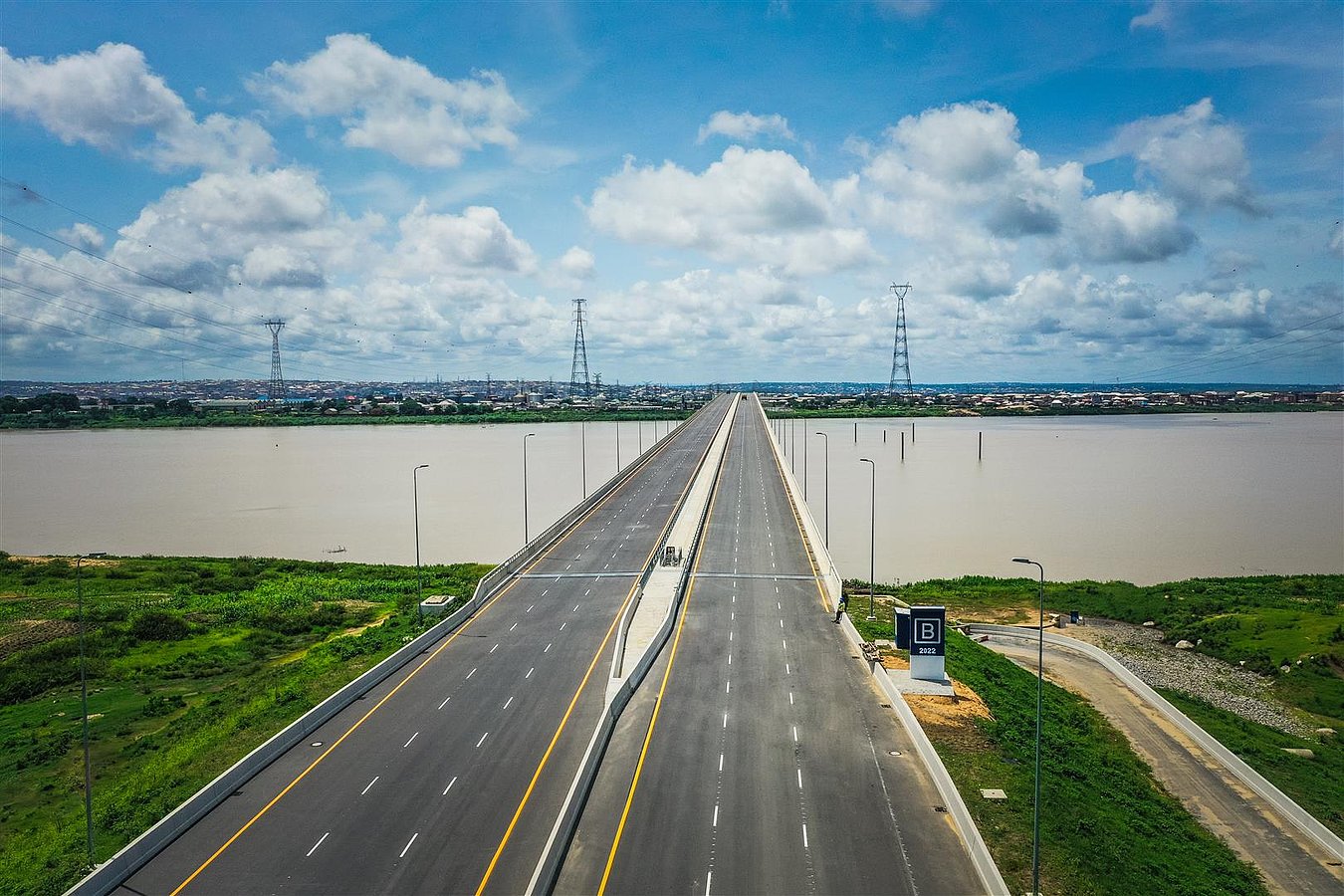
Priority infrastructure project with major socioeconomic impact
Second River Niger Bridge, Asaba / Onitsha
The existing bridge over the Niger River dates back to 1965. It serves as a major road connection, bridging the cities of Asaba on the west bank and Onitsha on the east bank and is part of the Trans-African Highway between Lagos and Mombasa in Kenya, in addition to being the main east-west connection within Nigeria.
The Second River Niger Bridge is part of a new motorway ring, which aims to minimize traffic congestion on the old bridge and to strengthen the entire region generally. Julius Berger is providing the planning, logistics and construction of the river bridge. Julius Berger’s scope of work comprises the construction of a 1,600 m long reinforced concrete river crossing with a maximum span of 150 m as well as 1 motorway junction, 1 toll station, and as a further challenge, 10 km of road construction on extremely soft and swampy terrain. The 3 sections: West Approach (755 m, 14 fields with 55 m span each), East Approach (205 m, 4 fields) and Main Bridge (630 m, 5 fields with a maximum span of 150 m) are being built in parallel using the different production methods "clock push" and "cantilever". Since the water level of the Niger varies by about 10 m between the dry and rainy seasons, the foundation work in the river is carefully planned and coordinated.
Additionally, soil improvement measures required for road construction, vertical drainage and horizontal dam base reinforcement are implemented in order to guarantee the load-bearing capacity and to accelerate the settlements of the sand dams, which are 6 m high on average.
11,900 m
Project length
153,000 m³
Concrete
22,000 t
Reinforcement
3,600,000 m³
Sand for road dams
17,500 m
Piles
1,400,000 m
Vertical drainage
230,000 m
Geotextile Encased Columns







